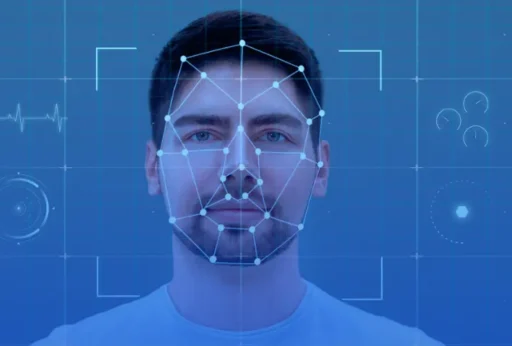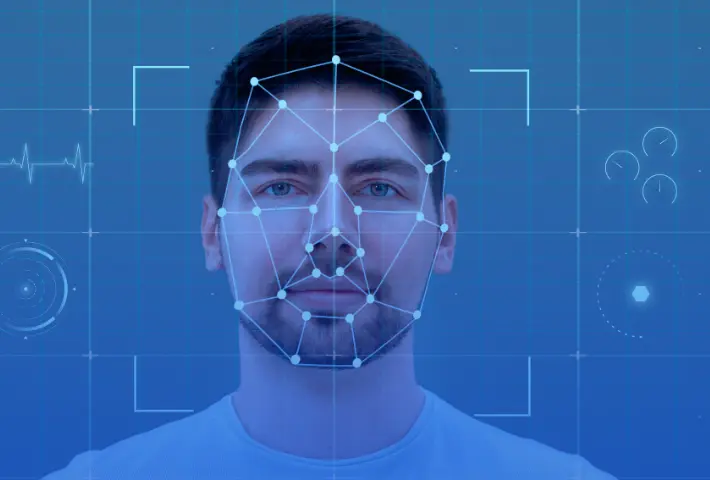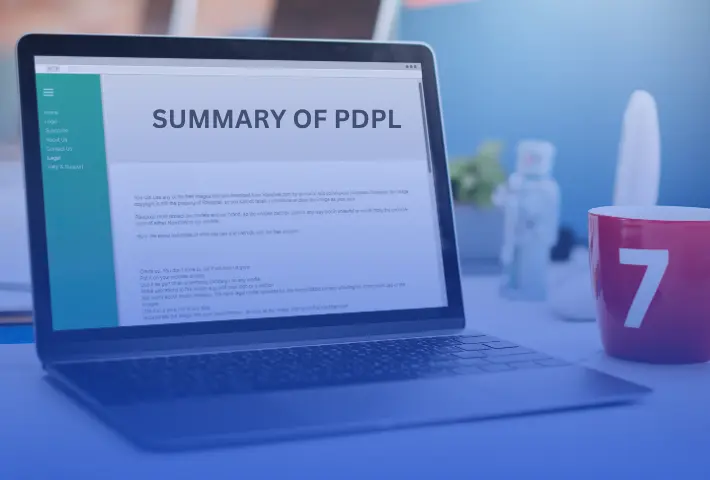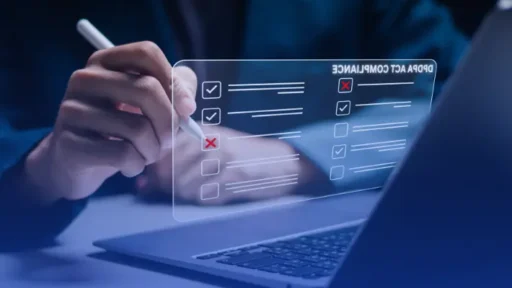Facial Recognition Technology (FRT) is no longer futuristic—it’s being used today across industries like retail, healthcare, education, fintech, and corporate offices. Whether for contactless attendance, targeted advertising, fraud prevention, or access control, FRT offers unparalleled convenience and precision.
However, behind the seamless scanning lies a crucial legal challenge: the collection and processing of biometric data, which is classified as sensitive personal data under India’s Digital Personal Data Protection Act (DPDPA), 2023. If not managed properly, FRT can pose risks related to privacy violations, algorithmic bias, and even surveillance abuse.
This blog explains how businesses can responsibly implement FRT in compliance with the DPDPA.
1. Understanding FRT and Biometric Sensitivity Under DPDPA
Facial Recognition Technology (FRT identifies or verifies individuals based on facial features. It works by capturing facial images and converting them into biometric templates that are stored or compared for authentication or analysis.
Under Section 2(t) of the DPDPA, any data that relates to an individual and is capable of identifying them is considered “personal data.” Since facial scans are uniquely identifiable, they fall under sensitive personal data, triggering stricter compliance obligations.
2. The Central Role of Consent in FRT Deployment
The cornerstone of DPDPA compliance is valid, freely given, informed, and specific consent.
Key Requirements:
- Explicit Consent for Biometric Data: Businesses must obtain unambiguous consent before collecting facial data. This is not just a check-box—it should be a clear opt-in mechanism.
- Digital Prompts: Consent can be captured via on-screen prompts, mobile apps, or access control kiosks with proper context.
- Consent Logs: Maintain detailed records of who gave consent, when, how, and for what purpose—including device metadata, IP, and timestamps.
- Consent Withdrawal: Users must have a simple way to withdraw consent, and the business must stop processing immediately upon withdrawal.
Example: An office using FRT for attendance must show a pop-up or agreement at first use explaining the purpose and duration of data retention, with an opt-out option.
3. Purpose Limitation: Use Only for What Was Promised
One of the most overlooked compliance breaches is purpose creep—using collected facial data for a new or expanded purpose without notifying users.
Legal Mandate:
Under DPDPA, personal data must be used only for the specific purpose for which it was collected.
Non-Compliant Example:
Collecting facial data for office entry, then later using it to track employee behavior or analyze productivity—without renewed consent.
Best Practice:
- Clearly define the purpose during consent (e.g., “attendance tracking only”).
- Seek fresh consent for any new use (e.g., marketing, behavior analytics).
- Include this in your FRT Policy or Notice of Processing.
4. Data Minimization and Storage Limitation
The DPDPA encourages data minimization: collect only what is necessary. Storing excessive or irrelevant facial data can increase your risk exposure.
Compliance Checklist:
- Collect minimal attributes—just the facial template, not full video or mood indicators unless necessary.
- Limit retention—store data only as long as needed.
- Automate deletion—create a deletion policy that purges expired or unnecessary biometric records.
Use tools that automatically delete logs after a defined time or after employment ends.
5. Accuracy and Fairness of Facial Recognition Technology (FRT) Systems
Facial Recognition Technology (FRT) is not immune to bias. Research shows that accuracy drops when identifying women, children, older adults, or ethnic minorities. This can result in unfair denials or false positives.
DPDPA Requirement:
Businesses must ensure the data they use in decision-making is accurate, complete, and up-to-date.
What You Should Do:
- Regularly audit the FRT system’s performance across demographics.
- Upgrade software to reduce false positives.
- Validate fairness by testing across age, gender, and ethnicity groups.
6. Security Obligations for Biometric Data
FRT systems process highly sensitive data, making them prime targets for cyberattacks and internal misuse.
Mandated Safeguards:
- Encryption of data in transit and at rest.
- Access Controls to limit who can retrieve facial templates.
- Intrusion Detection Systems (IDS) to flag anomalies.
- Regular vulnerability scans and patching.
- Audit logs to track who accessed what and when.
Data Breach Response:
Under DPDPA, organizations must:
- Notify the Data Protection Board of India promptly.
- Notify affected individuals where there’s a significant risk.
- Outline details like what data was compromised, impact, and resolution steps.
7. Data Principal Rights in the Facial Recognition Technology (FRT) Context
Every user whose facial data is processed has the following rights under DPDPA:
| Right | Implication for FRT |
|---|---|
| Right to Access | Can request what facial data was collected. |
| Right to Correction | Can correct metadata or details. |
| Right to Erasure | Can request deletion of facial data. |
| Right to Grievance Redressal | Can complain if FRT misidentifies them. |
| Right to Nominate | For consent and data access in case of death or incapacity. |
Integrate these rights in your digital interface (mobile app or HRMS).
8. Limited Exceptions for FRT Use
DPDPA allows for limited processing without consent in specific legitimate interest scenarios.
Example:
- An employer may process facial data without explicit consent if necessary to prevent fraud or ensure security—but only within a narrow legal interpretation.
Such cases must still:
- Provide notice,
- Ensure fairness and security,
- Respect opt-out rights (where applicable).
9. Penalties for Non-Compliance
The stakes are high. If you misuse facial data or fail to meet DPDPA requirements, penalties may include:
| Offence | Penalty (max) |
|---|---|
| Failure to protect biometric data | ₹250 crore (~USD 30M) |
| Processing without valid consent | ₹200 crore (~USD 24M) |
| Failure to notify breaches | ₹150 crore (~USD 18M) |
10. How to Build DPDPA-Compliant FRT Systems
To ensure compliance, businesses must:
- Conduct a Data Protection Impact Assessment (DPIA) before FRT rollout.
- Appoint a Data Protection Officer (DPO) to oversee governance.
- Establish an Incident Response Plan.
- Embed privacy-by-design in FRT system architecture.
- Train staff on biometric data handling and compliance obligations.
Facial Recognition is powerful, but it comes with great responsibility. Under India’s DPDPA, businesses must tread carefully—ensuring transparency, security, and consent at every stage. The best way forward? Embrace privacy by design, treat biometric data with care, and build systems that respect users’ dignity and rights.
Doing so not only avoids legal trouble but builds trust with customers, employees, and stakeholders in the age of intelligent surveillance.









